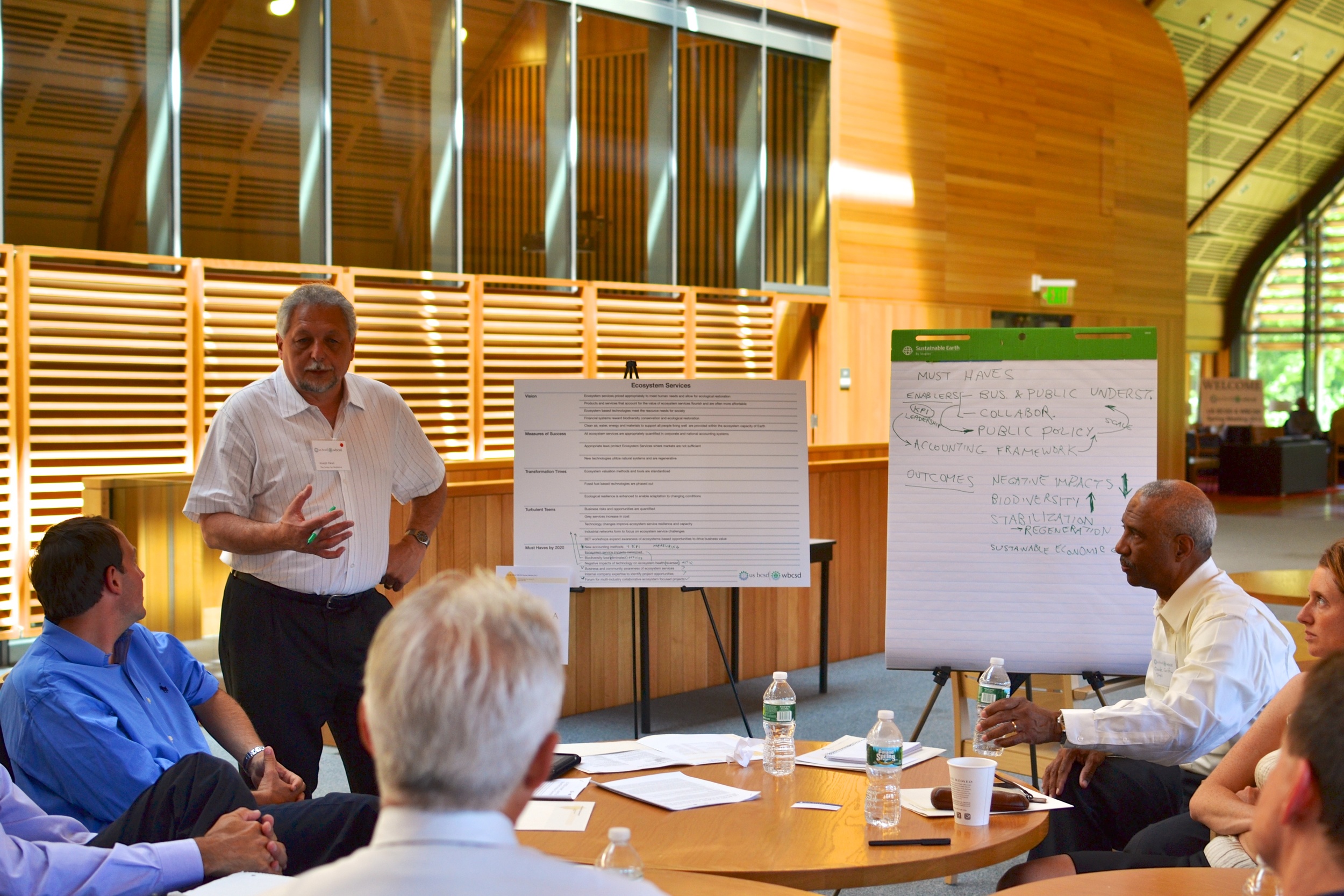On June 27-28, 2012, US BCSD and WBCSD members, government, academic, NGO, and other sustainability thought leaders gathered at Yale University’s Center for Business and the Environment to define directions to reach a sustainable world in which nine billion people can live well and within the planet’s resources by 2050.
Meeting attendees worked on partnerships, synergies and projects that combined US BCSD regional implementation strategies with the WBCSD’s global business solutions, using the framework of the WBCSD’s Vision 2050 sustainability pathway. Attendees discussed examples of successful activities already under way to achieve Vision 2050 “must haves” and sought out ways to help articulate, acknowledge and scale those activities. They then joined forces in an innovation workshop aimed at seeking out and encouraging step changes towards the Vision 2050 in the US.
Organized under four Vision 2050 focus areas, below are updates from regional US BCSD projects, new developments from the WBCSD work program, and member case studies from around the US.
We'd love to feature your organization's good work in our next quarterly report - respond to a our survey questions here and let us know what you've been up to.

Ecosystems
US BCSD and WBCSD members participating in the Yale meeting identified three high priority action items, responding to Vision 2050 “must haves” calling for deeper local environmental understanding, using ecosystems and enterprises to help create value, and building commitment to true value pricing.
Engage with US BCSD members to design a Business Ecosystems Training (BET) workshop (using the WBCSD BET modules) to enable decision makers in your organization to identify business opportunities available through an understanding of ecosystem services.
The US BCSD and WBCSD, with key partners, are customizing the WBCSD BET training modules for the U.S. business audience. Several regional workshops are being planned throughout the US in 2013. The workshops will be delivered via interactive webinars and 1-day in-person intensive workshops. The goal of the BET workshop is to enable EHS and sustainability professionals to integrate ecosystems thinking into their company’s operations to manage ecosystem services opportunities and risk associated with their company operations and supply chains. This program builds on several WBCSD-led business training sessions held around the world in 2012. For more information please contact Kieran Sikdar at sikdar@usbcsd.org or Jessica McGlyn at mcglyn.us@wbcsd.org.
Utilize the US BCSD’s Eco-Green Brownfield process to capture economic value from ecosystem services for your company’s operations through biodiversity and ecological restoration projects.
In August 2012 the US BCSD and cement manufacturer Essroc began development of a pilot project within the Delaware River Watershed to restore ecosystem services related to water quality through stream restoration, reforestation and other ecological restoration techniques. The project will be conducted in collaboration with the Wildlife Habitat Council to achieve the Wildlife At Work and Corporate Lands for Learning certifications and increase the wildlife habitat and biodiversity of the site. The US BCSD will utilize ecosystem valuation techniques to capture the full value of the ecosystem goods and services provided through the project. A case study will be prepared in 2013 for replication at other US BCSD member company sites.
Contribute to the US BCSD & WBCSD’s case study library of successful projects with an emphasis on measurable results and innovative collaborative business solutions.
On September 8, 2012 the WBCSD introduced solutions from some of the largest companies in the world with the launch of Biodiversity and ecosystem services: scaling up business solutions. The report, featuring 25 case studies, sends a strong business message that companies are scaling up solutions to ecosystems challenges and demonstrating a positive response to achieving global biodiversity targets. Peter Bakker, WBCSD President, noted: “Business is a major player in helping to minimize negative impacts on our ecosystems and this new publication gives real examples from our member companies, showing how it can be done. While there is no doubt that the challenges associated with ecosystem degradation and biodiversity loss are huge and complex, our case studies collection shows that business is starting to tackle them. We need to now focus on scaling them up and implementing them at speed.”Click here to access the full report. WBCSD members also featured additional case studies at the World Congressional Congress, available at this link, and at the WCC WBCSD-IUCN Business and Ecosystems Think Tank which focused on scaling up business and public policy solutions.

Energy
US BCSD and WBCSD members participating at Yale identified two action items for Energy, responding to Vision 2050 must haves calling for demand-side efficiency, infrastructure investment, corporate leadership, new financing models, and water efficiency.
Take Action on Energy in Buildings with the WBCSD’s EEB 2.0 project.
The WBCSD Energy Efficiency in Buildings 2.0 project works with key decision-makers who are responsible for, or have influence over, substantial building portfolios in the public and private sectors. Over the course of up to 10 selected engagements, the project will develop a replicable process for bringing key decision-makers and relevant stakeholders together to identify practicable energy efficiency solutions in the portfolios they control, and leverage these solutions as examples for others.
The Take Action on Energy in Buildings flyer was produced to summarize EEB 2.0’s approach and objectives. The project begins with a “Phase 0” period during which the working group has been finalizing the project’s objectives and scope, the company mix and the partnerships. The companies involved in phase 0 so far are: AGC Asahi Glass, EDF, GDF SUEZ, Lafarge, Schneider Electric, SGS, Skanska, United Technologies (Project Chair) and Saint-Gobain. These companies have been working with key partner organizations that are critical in executing EEB 2.0’s objectives including the International Energy Agency (IEA), the World Green Building Council (WGBC) and its regional network, and the Urban Land Institute (ULI).
Promote understanding and growth of PACE and other innovative financing models through expert examination and distribution of program results.
In late 2011, US BCSD member and PACE financing provider Ygrene Energy Fund signed a contract with the City of Sacramento to provide no-risk administration of the city's first-ever Property Assessed Clean Energy (PACE) program for commercial building owners. Concurrently, in September 2012 the US BCSD began development on a By-Product Synergy project in the region, which will leverage PACE financing as a valuable solution to overcome capital barriers in implementing identified synergy opportunities. US BCSD and WBCSD members with facilities in the East Bay and Sacramento area are encouraged to contact us for more information.

Sustainable Consumption
Yale meeting participants identified four action items for Sustainable Consumption, responding to Vision 2050 must haves calling for collaboration, innovation, systems thinking, shift to value net models, and business leadership.
Engage with trade associations to gain commitments and better integration of sustainability goals into supplier relationships.
The WBCSD released a how-to guide to increase business competitiveness with sustainable value chains in early 2012 titled “Collaboration, innovation, transformation. Ideas and inspiration to accelerate sustainable growth – A value chain approach”. The guide was developed by the WBCSD’s Sustainable Value Chain Workstream, with leadership from Unilever and The Coca-Cola Company; and includes case studies from AkzoNobel, The Coca-Cola Company, Henkel, Philips, Procter & Gamble, SABIC, Solvay, Sompo Japan Insurance, TNT, Umicore and Unilever. Sustainable Consumption was a key focus of the WBCSD-US Annual Meeting, which emphasized the critical role that business must play in innovation, choice editing and choice influencing to increase sustainable consumption across the entire value chain. WBCSD members will be scoping out the next phase of this effort at their annual meeting in Seoul, Korea.
Help US BCSD members publicize and share successful programs.
The Journal of Industrial Ecology - a peer-reviewed, international bimonthly journal that examines the relationship between industry and the environment from the perspective of the growing field of industrial ecology - released a special issue focused on industrial symbiosis. The issue shows that more systematic empirical work is emerging on the various forms of symbiosis, and points to the need for industrial symbiosis to become more widespread. The JIE also compiled a selection of previously published articles on the topic to accompany this special issue, which can be found at http://jie.yale.edu/symbiosis.
The JIE is currently seeking articles for a special issue on Industrial Ecology as a Source of Competitive Advantage in Business by June 1, 2013. (Submission of abstracts for review and feedback prior to that date, while not required, is strongly encouraged.) The goal of the special issue is to explore how the concepts and tools of industrial ecology can and do serve as a source of competitive advantage for firms, groups of firms and industry sectors. The complete call for papers can be found at http://www.yale.edu/jie/CFPs/CFP_IE4comp_ad.html.
Capture the approach outlined by the innovation team to establish a national materials organization to be used internally with CEO-level leaders to seek their input.
The US BCSD is working to create a National By-Product Synergy Network to engage more companies and communities to achieve their sustainability objectives through collaboration. With appropriate policy and a multi-industry US Council for Resource Recovery chaired by senior company leadership, a critical mass of companies can create a resilient national network to implement synergy projects and disseminate BPS best practices that are scalable. The US BCSD will strategically engage industries from all parts of a supply chain from raw materials, intermediate and final products, retail and end of life to participate in the National BPS Network. The US Council for Resource Recovery will provide guidance, vision and strategy to create a thriving collaboration that meets the sustainability demands of U.S. businesses.
Determine what’s usable data and how much data is needed in order to gain more participation in material reuse markets.
The cornerstone of the By-Product Synergy collaborative process is confidentiality. The US BCSD has developed project agreements as a part of the BPS process with the appropriate level of confidentiality to maximize company protection and participation while sharing the necessary data to identify and implement synergy projects. The US BCSD Expeditor model has been developed to provide additional facilitation of synergy identification, barrier resolution and project implementation in order to maximize the economic and environmental benefits for participants who may not have all the resources or expertise to implement synergy projects.
Initial data collection has been optimized to collect the minimum data for the synergy identification process in order to minimize resources spent on data gathering. The improved cirrus™ interface facilitates this process through two phases of data input to give participants the appropriate level of data for the synergy process. The US BCSD continues to develop new methods to search and extract useful synergy information to facilitate the synergy implementation process.

Water
And last, updates on action items from the Yale water breakout group. Actions respond to Vision 2050 must haves for increased attention on water, increase in water efficiency, local and corporate leadership, integrated urban management, and infrastructure investment.
Extend the US BCSD Water Synergy Project to more locations, offering a platform for working beyond your fenceline with other watershed users to identify and address issues related to water quality, quantity, and resiliency.
The US BCSD’s Water Synergy Project demonstrates how a watershed project can be implemented in a region, in this case southern Louisiana. The project is off to a great start with participants from 24 organizations representing multiple industries working together under the US BCSD’s structured collaboration work process to address issues in five areas: Wetlands, Numeric Nutrient Criteria Issues, Switching Water Supplies, Water System Collaboration, and Alternative Levee Materials. The project held it’s second working meeting on August 8, 2012 at Marathon Petroleum’s Refinery in Garyville, LA. Participants discussed a number of topics, including the importance for Louisiana stakeholders to work together proactively to establish baseline nutrient contributions and work with Louisiana Dept. of Environmental Quality on establishing numeric nutrient criteria; coastal resiliency incentives for assimilated and constructed wetlands to handle storm water and process water; and potential areas in Louisiana for water supply collaboration.
Create a Water Technology R&D Clearinghouse for existing technologies to facilitate best practice sharing.
WBCSD’s work on “Scaling Up Industrial Water Reuse” is developing a website to provide clear definition of water reuse; synchronize information scattered in many places; and provide an inventory of case studies, best practices, solutions and resources. In 2013, this program will also create decision tools for water reuse and start implementing pilot projects across sector and geography to create a platform to scale-up water reuse.
Show leadership by collaborating across boundaries (NGO, public/private collaboration) to share risk and opportunities.
The WBCSD’s Water Stewardship pathway, led by PepsiCo, works to enhance members’ water stewardship practices by advocating for cost effective, credible and operational tools and accelerating watershed-level responses. They will be publishing a Corporate Watershed Engagement Brief in 4Q 2012 and are exploring opportunities to catalyze action through projects on the ground. Also, the WBCSD’s “Water, Energy, Food Nexus” program is using a multi-stakeholder process to understand linkages among water, energy, and food/fiber/feed at the global and geographic level and develop policy and technology options to address the identified challenges.
Veolia Water has been testing innovative models for cities, offering larger cities an attractive alternative to the traditional operations and maintenance model called Peer Performance Solutions. Peer Performance Solutions preserves a public workforce and public governance but infuses private-sector expertise, leveraging Veolia’s unique global strength to provide innovative, flexible and cost-effective solutions. The model is currently implemented in New York City and Winnipeg, Manitoba. In New York City, the Department of Environmental Protection expects to save more than $100 million annually in their operating budget for water and wastewater services. And in Winnipeg, Veolia is helping design long-term, wastewater treatment facilities capital solutions via a public workforce. For more information, visit http://www.veoliawaterna.com/media/newsletters/2012-july/innovation-helps-cities-meet-budget-goals/
Explore mechanisms to be sure water is part of any company innovation process, especially local issues.
On August 20, 2012, the WBCSD Water Stewardship pathway released Water for Business (W4Biz) Version 3. This upgrade to the e-report (first launched in 2009) covers 18 initiatives to support business in becoming responsible water stewards. Developed with IUCN and SustainAbility, this version includes key messages to tool developers and users, and a framework to connect tools to business needs, including research & development for new products. W4Biz helped structure a seminar at World Water Week, co-convened with WRI and WFN, calling for harmonization across initiatives. See the Water Management Tools section of the WBCSD website for more information.
Valuing water more effectively will facilitate integration of water into business innovation processes. In 4Q 2012, WBCSD’s “True Value of Water” program will be publishing “Water Valuation: Building the Business Case” and a complementary report on “ Valuing Water: an Introduction to Concepts and Techniques”, both of which are based on a collection of business valuation case studies.
We'd love to feature your organization's good work in our next quarterly report - respond to a our survey questions here and let us know what you've been up to.
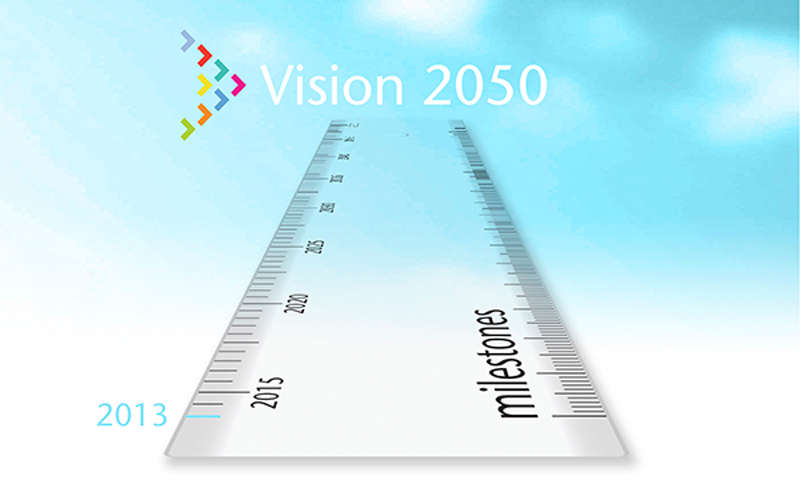





 Join us this February 6-7, 2013 for our Winter Meeting in Austin, Texas. Collaborate, share, and build strategies with US BCSD members and other sustainability experts to tackle sustainable development challenges impacting your business. Grapple with the complexities of scaling up solutions to Vision 2050 through collective learning and real, actionable regional projects in the US. Join together here to learn from one another and apply our collective expertise in groundbreaking new ways.
Join us this February 6-7, 2013 for our Winter Meeting in Austin, Texas. Collaborate, share, and build strategies with US BCSD members and other sustainability experts to tackle sustainable development challenges impacting your business. Grapple with the complexities of scaling up solutions to Vision 2050 through collective learning and real, actionable regional projects in the US. Join together here to learn from one another and apply our collective expertise in groundbreaking new ways.


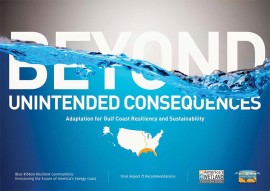
 Mike Long,
Mike Long, 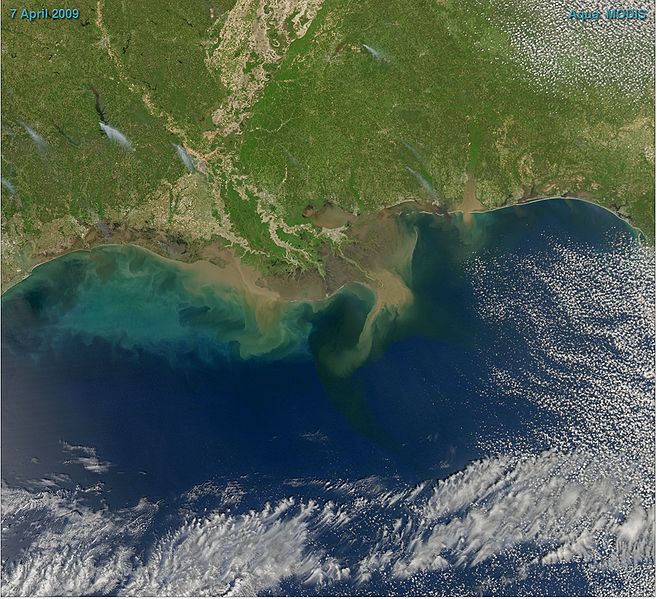 The Environmental Protection Agency has awarded the Louisiana Coastal Protection and Restoration Authority (CPRA) $100,000 to reduce hypoxia in the Gulf of Mexico. This area in the northern Gulf of Mexico is known as the ‘dead zone.’ The funds will be used to develop a statewide nutrient reduction strategy for Louisiana which adopts strategic elements identified in action plans of the Gulf of Mexico Alliance and the Gulf of Mexico Hypoxia Task Force.
Hypoxia means low oxygen and is primarily a problem in coastal waters. The Gulf of Mexico dead zone is an area of hypoxic waters at the mouth of the Mississippi River. Its area varies in size, but can cover up to 6,000 to 7,000 square miles. The zone occurs between the inner and mid-continental shelf in the northern Gulf of Mexico, beginning at the Mississippi River delta and extending westward to the upper Texas coast. The dead zone is caused by nutrient enrichment from the Mississippi River, particularly nitrogen and phosphorous.
The Environmental Protection Agency has awarded the Louisiana Coastal Protection and Restoration Authority (CPRA) $100,000 to reduce hypoxia in the Gulf of Mexico. This area in the northern Gulf of Mexico is known as the ‘dead zone.’ The funds will be used to develop a statewide nutrient reduction strategy for Louisiana which adopts strategic elements identified in action plans of the Gulf of Mexico Alliance and the Gulf of Mexico Hypoxia Task Force.
Hypoxia means low oxygen and is primarily a problem in coastal waters. The Gulf of Mexico dead zone is an area of hypoxic waters at the mouth of the Mississippi River. Its area varies in size, but can cover up to 6,000 to 7,000 square miles. The zone occurs between the inner and mid-continental shelf in the northern Gulf of Mexico, beginning at the Mississippi River delta and extending westward to the upper Texas coast. The dead zone is caused by nutrient enrichment from the Mississippi River, particularly nitrogen and phosphorous.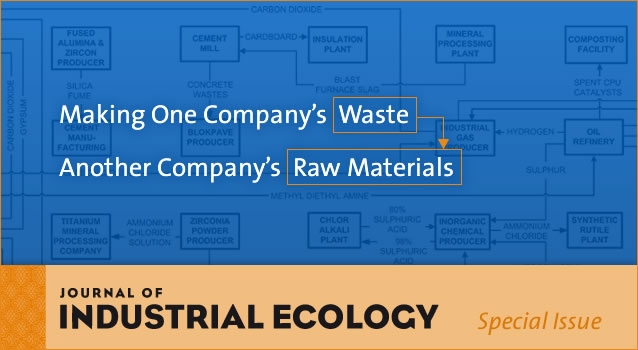 Making one company’s waste another company’s raw material has long been one of the most intriguing notions in industrial ecology. This strategy known as industrial symbiosis — by analogy to the manner in which some species in nature cooperate to mutual advantage — came to public attention in the early 1990s. An industrial district in Denmark with a dense web of resource sharing and by-product exchanges was discovered. Efforts to replicate the Danish example led to a search for other examples and strategies to create such industrial networks. Twenty years later, numerous examples have been documented and countries from China and Korea to the UK have embarked on programs to establish or facilitate industrial by-product exchange.
Making one company’s waste another company’s raw material has long been one of the most intriguing notions in industrial ecology. This strategy known as industrial symbiosis — by analogy to the manner in which some species in nature cooperate to mutual advantage — came to public attention in the early 1990s. An industrial district in Denmark with a dense web of resource sharing and by-product exchanges was discovered. Efforts to replicate the Danish example led to a search for other examples and strategies to create such industrial networks. Twenty years later, numerous examples have been documented and countries from China and Korea to the UK have embarked on programs to establish or facilitate industrial by-product exchange. 